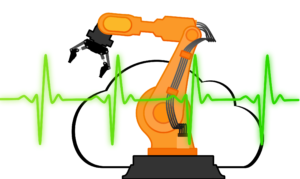 Oddly enough, one of the last sectors to accept security technology was industrial systems. For years industrial systems stuck with proprietary protocols and software managed and monitored by humans and not connected to a more extensive network. Because nothing could get in or out, hackers weren’t attacking the system. There were little vulnerabilities back then, but now? Different story.
Oddly enough, one of the last sectors to accept security technology was industrial systems. For years industrial systems stuck with proprietary protocols and software managed and monitored by humans and not connected to a more extensive network. Because nothing could get in or out, hackers weren’t attacking the system. There were little vulnerabilities back then, but now? Different story.
Everything is online. Companies want big data and smart analytics as well as new capabilities that make things run smoother. These allow industrial systems to provide more information, be both more responsive, and be more efficient. IT and OT (operational technology) are marrying processes together, but that also means there are unknown security risks.
Everyone knows what information technology is and realizes it’s related to the storage, recovery, transmission, and protection of data. Operational technology is the hardware and software that monitors and controls industrial systems, including critical infrastructure, utilities, electric grids, manufacturing plants, and traffic control systems. Many specialized frameworks go into OT like data acquisition (SCADA) systems, process control domains, and safety instrumented systems, which are cohesive with Industrial Control Systems (ICS).
The advantages of networked ICS
Before the internet, setting up an ICS was comparatively difficult because control systems were isolated and siloed. Now, everything is networked, and data is sent continually via the internet.
The system gets data monitoring and measuring process variables that it compares with setpoints. The system then sends commands, for example, to control valves, that will keep all processes on track. Because it continually reviews the data, It can ensure machinery isn’t overheating and there’s no glitch in the system. It’s a constant health check on various systems for all kinds of large machinery. And it’s always better to know if something’s wrong before it could potentially cripple the whole enterprise.
An ICS keeps processes moving by safeguarding systems, ensuring data is accurate and ultimately keeps things running smoothly and everyone safe.
When IT and OT collide
When IT and OT marry into one another, it’s a potent mixture of connected sensors, instruments, and devices collecting and sharing data. But these advantages all go out the window if your ICS is compromised.
Because the lines between IT and OT are blurring, this gives bad actors more chances to attack. As with everything computerized, being connected to the network leaves openings for bad actors who seek weaknesses within systems. Thanks to this connectivity, all your sensors, instruments, and devices can be weaponized and turned around to sabotage critical infrastructure, like grids, transportation networks, power plants, water, and waste management systems. This means security should be at the forefront.
Because threats and targets are continually evolving, security has to be continuously maintained. Now, like with other computer systems, the challenge is securing your ICS from an operational standpoint.
There needs to be an HMI (human-machine interface) that keeps infrastructures monitored and in check to keep things in order. The problems are there’s a question of accessibility, which is a risk for ICS security, making HMIs targets to IP-based weaknesses:
- Authentication bypass
- Weak session management
- Unsecured ICS communication protocoling
- Insufficient control traffic encryption
Attackers go head-on for ICS with generic malware and malware designed to attack critical infrastructure. This causes denial-of-service or DoS attacks that screw everything up. Ultimately, the average IT person can’t handle this level of cybersecurity. These kinds of attacks require an in-depth knowledge of IT, OT, ICS, and the kitchen sink. If an attacker lands a successful campaign, that could mean a city is losing power or water or a nuclear plant going offline. You need next-level help to make sure your infrastructure is air-tight and without any security holes. We can help.



